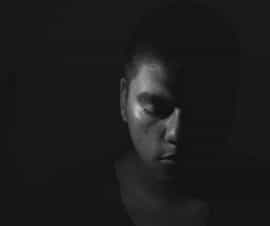The NHS definition of addiction is: ‘Not having control over doing, taking or using something…

Depression – how therapy can help (blog 1) – the ‘D word’ by Lindie White
1.
Depression – how therapy can help (blog 1) – the ‘D word’ by Lindie White

Many of our clients at Bramham Therapy come to us because they are suffering from depression. Launching our new blog, psychotherapist, Lindie White, begins a series looking at different aspects of depression and how therapy can help.
Gwyneth Lewis calls her book about her own experience of depression Sunbathing in the Rain. What a wonderful image – the suggestion of basking in warmth and light, even in the rain, indicates that the sunbather has found a place of relative equanimity within. As a foreword she writes: “To anybody who suffers from depression: DO NOT BE DISCOURAGED.”
The root meaning of the word courage is ‘heart’. So take heart! One in five people suffer from depression in the UK and it is one of the most common presenting problems brought to counselling and psychotherapy. But despite its prevalence it still carries a stigma. One of my own clients referred to it as ‘The D word’.
Depression is rather a blanket term. Depressive states range widely from a constant sense of dissatisfaction and persistent low mood, to a suicidal state of mind sometimes tragically ending in the taking of life. Although there are clearly identifiable features, the experience is profoundly individual. The following are some personal experiences of depression:
Gwyneth Lewis “felt ashamed of my wretchedness, as if I’d brought it on myself”. In Darkness Visible, William Styron describes waking in the early hours to a “yawning darkness, wondering and writhing at the devastation taking place in my mind, (the pain) like that of a broken limb”. Richard Mabey, in Nature Cure, writes: “I couldn’t bring myself to do anything. I stayed in bed most of the day, quaking with anxiety about the anxiety I was trapped in.” And in one of my own bouts of depression I wrote:
“All life is held
in the vice-like grip of frost.
A smile is a flower picked and given by other people.
It would crack my face,
if I dared.”
So why do we get depressed? Maybe it’s work, relationships, grief or illness. Maybe it’s fear of living or dying, or just the thwarting of our hopes and dreams. Whatever it is, when we’re depressed we’re under a cloud and the only voices we can hear are our negative thoughts and painful feelings.
What can we do about it? In therapy we start by deeply and attentively listening to the depressed person, making the depression our guide to what the person really wants or needs. There are no quick fixes, but listening to someone, as they are, is powerful and does its own work. As Gwyneth Lewis writes: “In my experience, depression can be a great friend. It says: the way you’ve been living is unbearable, it’s not for you. And it teaches you slowly how to live in a way that suits you infinitely better.”
By Lindie White (psychotherapist)
May 2013
We’ll be blogging about depression – its causes and treatments – over the next few months. Meanwhile check out www.mind.org.uk for more information about helping yourself or someone you know through depression, or tweet us with your own experiences @WendyBramham

Next month, Lindie writes more about the causes of and approaches to depression. Lindie White is a psychotherapist (retired in 2016) and has worked privately for 15 years and for 12 years in an NHS drop-in surgery for the homeless.
See also:
Gwyneth Lewis, Sunbathing in the Rain, Flamingo, 2006;
William Styron, Darkness Visible, Random House, 2001;
Richard Mabey, Nature Cure, Chatto & Windus, 2008;
Sally Brampton, Shoot the Damn Dog, Bloomsbury 2009




This Post Has 0 Comments